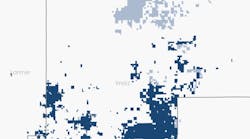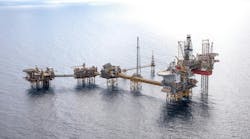The US Federal Energy Regulatory Commission sent an important signal Nov. 19 when it launched a cost-recovery investigation of three major interstate gas pipelines' rates.
Analysts said the inquiry involving Natural Gas Pipeline Co. of America (NGPL), Northern Natural Gas Co. (NNG), and Great Lakes Gas Transmission Co. was the first such move by FERC in more than a decade. It also was a result not of formally filed complaints, but of FERC staff's analysis of data routinely submitted by interstate pipelines.
FERC Chairman Jon Wellinghoff explained that in March 2008, FERC redesigned Form 2, on which the information is submitted, "to better facilitate the ability to make a meaningful assessment of the pipeline's cost of service and current rates."
Pipelines filed the revised form for the first time last April, and a staff analysis found that the three systems were recovering more costs than FERC allows, he noted.
‘Not full story'
"Analysis and consideration of the Form 2 data is an important starting point for any commission action under Section 5 [of the Natural Gas Act]," Wellinghoff said, adding, "However, the review of Form 2 data is not the full story, and must be considered in conjunction with other factors, such as the costs and risks of litigation, the level of infrastructure investments, and the existence of a rate moratorium or comeback provision."
The case will proceed expeditiously because refunds are not possible, he said.
William F. Hederman, the former founding director of FERC's Market Oversight and Investigations Office, who now is a senior energy policy research analyst at Concept Capital, said, "Expediting also will be important to help investors get a handle of the extent of regulatory uncertainty this creates for pipelines."
FERC's decision to head down this path is a significant policy change, Hederman wrote Nov. 19. "The extent to which it changes regulatory risks remains to be seen. Nevertheless, it does appear, in our opinion, likely to increase regulatory risks for interstate gas pipelines," he wrote.
Not insulated
This is particularly true for systems above NNG, which is No. 15 on the Natural Gas Supply Association's list of "actual pipeline rate of return" for a 5-year average ending in 2007, Hederman said. Pipelines generally thought infrastructure reinvestment could insulate themselves from this action, he said. NGPL's inclusion despite parent Kinder Morgan's extensive infrastructure investments could change this, he said.
FERC's action was the top topic when the Interstate Natural Gas Association of America's board held its monthly teleconference on Nov. 30.
"The commission's decision to initiate Section 5's caught our attention and is a matter of concern," INGAA Pres. Donald F. Santa told OGJ afterward. "Several commissioners' statements show they also recognize the need to maintain the integrity of FERC's regulatory program and the capacity for pipelines to attract financing."
More Brand Name Current Issue Articles
More Brand Name Archives Issue Articles
View Oil and Gas Articles on PennEnergy.com


